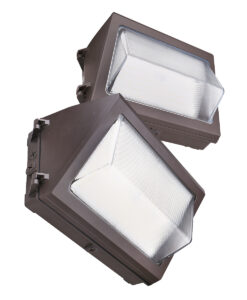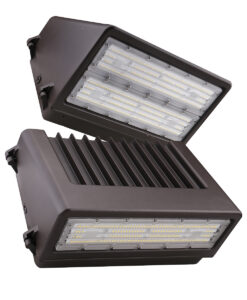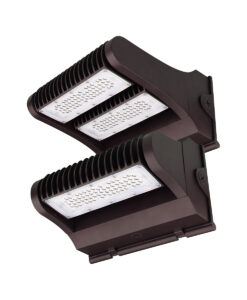Lighting plays a vital role in shaping the atmosphere and functionality of any space. Among the various lighting options available, wall light fixtures stand out for their versatility and style. In this article, we’ll delve into the intricacies of wall light fixtures, exploring their types, the science of light, installation tips, and maintenance practices.
Understanding Wall Light Fixtures
Wall light fixtures serve as both decorative elements and sources of illumination in a room. They are typically installed at eye level or above to help highlight walls, artwork, or architectural features. The right wall light can enhance the aesthetic appeal of a space while providing essential lighting. Beyond mere functionality, these fixtures can transform the ambiance of a room, creating a warm and inviting atmosphere or a sleek and modern vibe, depending on the design and placement.
The Basics of Wall Light Fixtures
At its core, a wall light fixture is a lighting element attached to a wall, distinguishing it from ceiling-mounted lighting. These fixtures can be used in various settings, including residential, commercial, and hospitality environments. In homes, they often serve as a focal point in living rooms, hallways, and bedrooms, while in commercial spaces, they can enhance the customer experience by creating a welcoming environment. The versatility of wall light fixtures allows them to adapt to different needs and styles, making them a popular choice among designers and homeowners alike.
Wall fixtures come in numerous designs, materials, and styles, making them suitable for different themes and functions. From sleek modern designs to ornate vintage styles, they can complement existing decor while adding their own touch. Materials such as metal, glass, and wood can be combined to create unique looks, while finishes like brushed nickel, antique brass, or matte black can further personalize the aesthetic. The choice of bulb type, whether LED, incandescent, or halogen, also plays a significant role in the overall effect, influencing both the brightness and warmth of the light emitted.
Different Types of Wall Light Fixtures
There are several types of wall light fixtures, each serving unique purposes. Key categories include:
- Wall Sconces: These fixtures typically project light both upward and downward, making them ideal for accent lighting. They can be used to frame mirrors, highlight doorways, or create a cozy reading nook when placed beside a chair.
- Flush Mounts: Mounted flat against the wall, they provide broad illumination and are suitable for smaller spaces. These fixtures are often chosen for their minimalist design, making them a seamless addition to modern interiors.
- Picture Lights: Designed to illuminate artwork, these fixtures highlight the features of paintings and photographs. They come in various sizes and styles, allowing for a tailored approach to showcasing art in galleries or personal collections.
- Accent Lights: Used primarily for highlighting specific areas or objects, these fixtures add depth and dimension to a room. They can be strategically placed to draw attention to architectural details or decorative elements, enhancing the overall design.
In addition to these common types, there are also more specialized fixtures such as swing-arm wall lamps, which offer adjustable lighting for reading or task work, and outdoor wall lights designed to illuminate entryways and patios. The growing trend of smart lighting has also influenced wall fixture designs, with many now featuring integrated technology that allows for remote control and customization through smartphone applications. This evolution in wall light fixtures not only enhances functionality but also provides an opportunity for homeowners to express their personal style through innovative lighting solutions.
The Science Behind Lighting
To fully appreciate wall light fixtures, it is essential to understand how light functions and its broader implications in design. Light is a form of energy that allows us to see the world around us. The characteristics of light can dramatically influence the mood and perception of contemporary spaces.
How Light Works
Light travels in waves and can be categorized based on its color, intensity, and distribution. When we choose a wall light fixture, we’re also making decisions about the type of light bulb to use, which can affect brightness. Common options include incandescent, LED, and fluorescent bulbs, each producing different qualities of light.
Color temperature also plays a significant role in how light is perceived. Warm white lights (around 2700K) create a cozy atmosphere, while cooler lights (upwards of 5000K) can evoke a more clinical, energizing feel. Understanding this can help in selecting the appropriate wall light fixture for a given setting.
The Role of Lighting in Interior Design
In interior design, lighting directs attention and creates a specific ambiance. The strategic placement of wall light fixtures can emphasize certain features within a room, such as texture or color. Furthermore, lighting influences how space is perceived in terms of size and depth.
For instance, fixtures placed at varying heights can cultivate an illusion of space, making lower ceilings feel less confining. Proper lighting also enhances functionality; for example, using bright wall lights in a reading nook can make the area more inviting and user-friendly.
Choosing the Right Wall Light Fixture
Selecting the right wall light fixture involves careful consideration of various factors that can affect both functionality and aesthetics. Understanding these elements ensures that any fixture chosen serves its purpose effectively at the same time as enhancing the decor.
Factors to Consider When Choosing a Wall Light Fixture
When selecting a wall light fixture, consider these key factors:
- Style: Choose a fixture that complements your existing decor and personal style.
- Purpose: Determine what role the fixture will serve—be it ambient, task, or accent lighting.
- Size: Ensure the scale of the fixture is appropriate for the wall and accompanying decor.
- Installation Location: Consider where the fixture will be placed; certain types may be more suitable for specific areas.
The Impact of Wall Light Fixtures on Room Ambiance
The ambiance of a room is heavily influenced by lighting. Wall light fixtures can provide warmth or drama based on their style, placement, and the type of light used. For instance, soft, diffused lighting from sconces on either side of a bed can create a serene, inviting atmosphere.
Conversely, bold, fluorescent wall lights may suit a functional workspace but could feel harsh in a personal setting. Therefore, understanding how lighting types and styles contribute to ambiance is essential for anyone looking to create a specific mood in their space.
Installation of Wall Light Fixtures
Once you’ve chosen the ideal wall light fixture, the next step is installation. Proper installation not only ensures safety but also maximizes the fixture’s effectiveness at providing light. This section will clarify what is necessary for successful installation.
Tools Needed for Installation
Before beginning the installation process, gather the necessary tools. A standard installation may require:
- Screwdriver (Phillips and flathead)
- Wire stripper
- Pliers
- Drill and drill bits
- Electrical tape
For some installations, you may require additional materials like wall anchors or certain specific screws. Always review the manufacturer’s guidelines for any specific requirements for the chosen fixture.
Step-by-Step Installation Guide
Follow these steps for a secure installation:
- Turn Off Power: Always ensure electrical power is turned off to prevent any accidents during installation.
- Mark Placement: Measure and mark the desired height for the fixture on the wall.
- Install Bracket: Attach the mounting bracket included with the fixture to the wall using screws.
- Connect Wires: Connect the fixture wires to the corresponding electrical wires in the wall, ensuring a secure connection with wire nuts.
- Secure the Fixture: Attach the light fixture to the bracket. Again ensure everything is secure and that there are no exposed wires.
- Restore Power: Turn the power back on and test the fixture to confirm proper installation.
Maintenance and Care for Wall Light Fixtures
After installation, regular maintenance will ensure your wall light fixtures continue to function effectively and look attractive. Knowledge of proper care helps prolong the life of fixtures while maintaining their appearance.
Cleaning Your Wall Light Fixture
To keep wall light fixtures looking their best, regular dusting and cleaning is necessary. Use a soft, dry cloth to wipe down the fixture and clear any dust, avoiding harsh chemicals that can damage the finish. For glass or crystal fixtures, consider using a glass cleaner to ensure clarity and shine.
For hard-to-reach areas or intricate designs, a soft-bristled toothbrush can help dislodge dust buildup without damaging the fixture. Regular cleaning not only maintains aesthetics but also ensures the fixtures emit light effectively.
Troubleshooting Common Issues
Occasionally, wall light fixtures may encounter functional issues. Some common problems include flickering bulbs or failure to turn on. In such cases, check the bulb and switch, as these are often the primary sources of issues.
If problems persist, inspecting the wiring connections is vital to ensure everything is secure. If electrical skills are lacking, it is wise to consult a professional electrician to prevent any hazards.
In summary, wall light fixtures offer both aesthetic and functional benefits when properly understood, selected, installed, and maintained. With careful attention to design and practical considerations, these fixtures can significantly enhance any room’s ambiance and utility.
Illuminate Your Space with Expertise from PacLights
Ready to transform your space with the perfect wall light fixtures? At PacLights, we’re committed to guiding you through the selection and installation of high-quality LED lighting solutions tailored to your commercial or industrial needs. Our energy-efficient indoor and outdoor lighting options are designed to meet the unique requirements of every customer. Don’t hesitate to Ask an Expert at PacLights for personalized advice on how to brighten your space effectively and stylishly.





Disclaimer: PacLights is not responsible for any actions taken based on the suggestions and information provided in this article, and readers should consult local building and electrical codes for proper guidance.